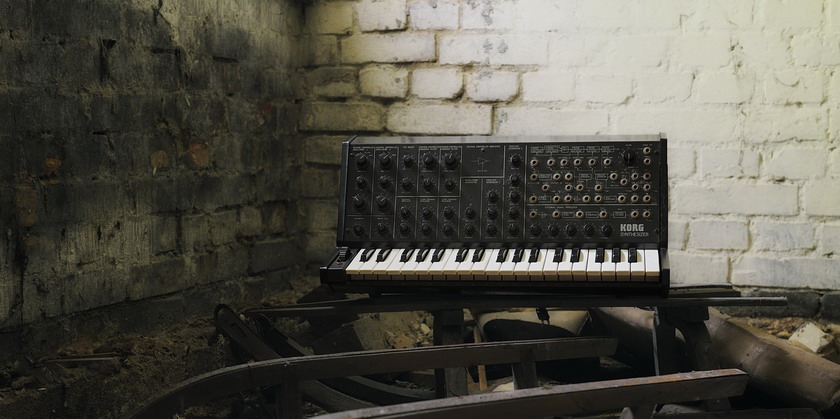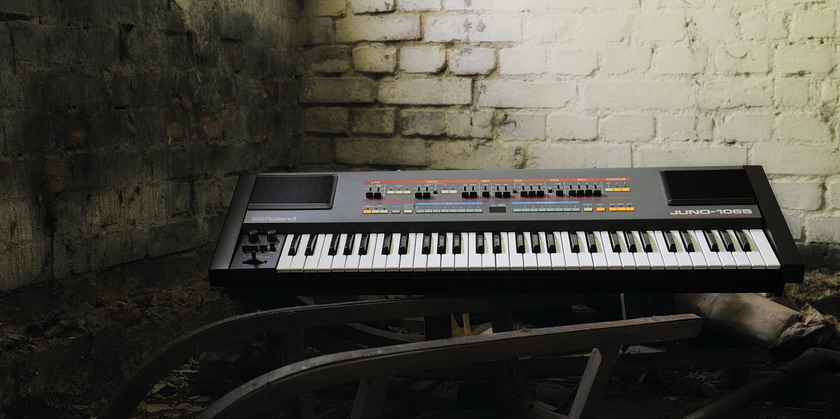Aelita is one very curious and unusual monophonic synthesizer. After all, how many monosynths offer unison?
Our Aelitas are definitely not cheap but they are literally (this is no exaggeration!) taken apart and every single part cleaned / restored / tested. We have shipped many Aelitas worldwide and got nothing but favourable reviews.
We are also very happy to announce that we offer MIDI for those synthesizers, so they can be easily interfaced with modern studio requirements.
Please note that the price tag reflects the fact that it takes an enormous amount of time to properly restore an Aelita. To give you an estimate, the time needed to bring an Aelita to its former glory would easily be enough to service 2,5 Polivokses.
SADLY, THIS WILL BE THE LAST AELITA WE HAVE FOR SALE FOR THE TIME BEING, SO ONCE IT’S GONE, THEY ARE GONE.
REGULAR PRICE:
1230 EUR (1100 EUR plus 23% VAT).
Please click on the “Contact” tab in the top right corner of the page if you are not sure whether VAT applies to you.
FREQUENTLY ASKED QUESTIONS
Q: I have heard that Soviet synths in general (including Aelitas) are unreliable and have serious tuning issues.
A: That is totally not true and a myth, most likely created by people who had Aelitas that had issues but did not know how to fix them. Speaking from experience (and that’s around Aelitas), it can be said that Aelitas that have not had a general overhaul since they were new will be barely functional and, no matter how beautiful, will develop faults, have terribly scratchy pots and might indeed have tuning issues. The rule of thumb here is that if you find a Japanese synth in the attic, it most likely will work fine. Soviet synths won’t. HOWEVER, once a Soviet synth received a full overhaul – in case of Aelita it means taking everything apart, replacing ALL capacitors, etc. – it will function properly for years to come and not have any tuning issue. But it simply has to be done properly and by someone who knows how to do it and how a Aelita should sound. Aelitas are not Yetis, they are regular synthesizers and should be treated as such.
Q: I have heard that this Soviet synth mania, including the Aelita, is just hype and they are not worth the price.
A: We believe otherwise. Besides, since we offer money back for clients very dissatisfied with the purchase, it could easily happen that an Aelita is returned to us. And we have never had anyone return either a Polivoks or an Aelita. Quite on the contrary, it is not uncommon for a client to write us a letter of praise. However unusual this may sound.
Q: There are so many other exciting Soviet synthesizers. Why do you deal only with Polivoks and Aelita?
A: When you run a small company, you have to specialize. You always have very limited time plus it’s always you who pays for that time. So you have to minimize the risk of failures, meaning it’s best to focus on the instruments you know best. And we know the Polivoks and Aelita best.
And last but not least, a very concise summary that we received from one of our clients who, as it is clear to see, is a great fan of the Aelita.
1) Although limited in terms of features, it has such a powerful sound over any other monosynth I’ve ever used. Coupled up with delay/reverb, I’ve had plenty of “wow” moments.
2) The Aelita looks stunning, like it’s part of a 1960s launch pad control. It’s now above the Polivoks on a rack. As a collector of Soviet memorabilia (that also happens to like synths) it’s a wonderful object to own.
3) Such expressive and vintage sounding filter resonance. With modulation, think Kraftwerk’s “Antenna”, that sort of trill sci-fi sound, so much fun!
4) The Aelita’s one of only two synths that I’ve ever set my alarm early so I can have a quick jam before work. The other was the Polysix, so thanks, they both came from Analogia.pl. Very pleased with them.
5) The Aelita is solid with tuning, hence the early morning jams. It’s slightly out for about 30 seconds, then settles nicely. Not bad for an analogue synth of its age.
6) The square wave is so modern sounding, sort of acid-house perfect. Incredibly hollow and percussive. Very surprised by that.
7) The envelopes are snappier that I’d expected too. With fine adjustment of the the filter env, managed to get a fair approximation of Hot Butter’s “Popcorn” sound. So it has some Moog-like traits for sure.
8) The subtle vibrato is surprisingly effective. Setting one of the oscs with a slow pitch modulation can create room-shaking, phasing basses.
9) I love the “TV” style buttons. Reminds me of trying to change channels in the early 80s. No other synths have those, very cool.
10) To sum up, zero regrets in purchasing. It was exactly the sound and look I was aiming for. The added plus is that it has a fascinating history. It’s a real talking point. I can’t help but think, if it had PWM and/or portamento, it would be in the top 10 monosynths of all time. The ability to tap out held chords is marvellous- instant house or rave.

















